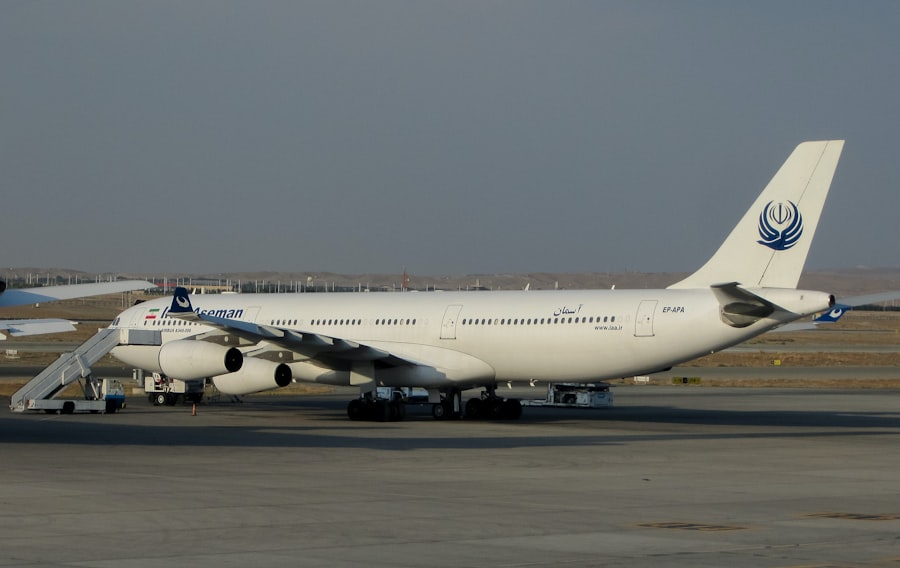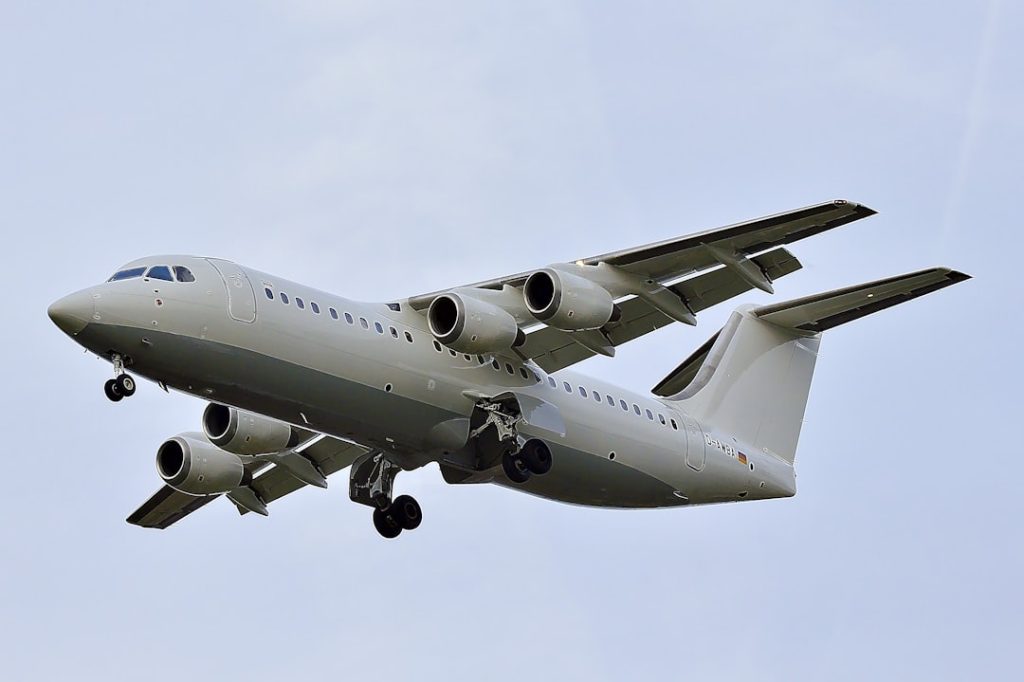The Airbus A330-300 is a wide-body twin-engine aircraft that has made a significant mark in the aviation industry since its introduction in the early 1990s. Designed for medium to long-haul flights, the A330-300 is part of the A330 family, which includes various models tailored to different operational needs. The aircraft was first delivered in 1994 and has since become a popular choice among airlines for its versatility, efficiency, and passenger comfort.
With a typical seating capacity ranging from 250 to 300 passengers, depending on the configuration, the A330-300 is well-suited for both high-density routes and more spacious layouts. The A330-300’s design is characterized by its wide fuselage, which allows for a comfortable cabin environment and ample cargo space. Its long-range capabilities make it an ideal option for transcontinental flights, connecting major cities across continents.
The aircraft has been lauded for its operational flexibility, allowing airlines to adapt their services to meet varying demand levels. As a result, the A330-300 has become a staple in many airline fleets around the world, serving both legacy carriers and low-cost airlines alike.
Key Takeaways
- The Airbus A330-300 is a popular wide-body, twin-engine jetliner known for its versatility and efficiency in the airline industry.
- The A330-300 features a spacious and comfortable cabin layout, with options for different seating configurations to accommodate various passenger needs.
- With its impressive range and fuel efficiency, the A330-300 is a cost-effective choice for airlines, offering both long-haul and regional flight capabilities.
- The aircraft is equipped with advanced safety features and technology, ensuring a secure and reliable flying experience for passengers and crew.
- As the A330-300 continues to evolve with future developments and upgrades, it will remain a key player in the aviation industry, shaping the future of air travel.
Design and Features of the A330-300
The design of the Airbus A330-300 is a testament to modern aeronautical engineering, combining aesthetics with functionality. The aircraft features a sleek, aerodynamic shape that enhances fuel efficiency and reduces drag during flight. Its wings are equipped with winglets, which further improve performance by reducing vortex drag at the wingtips.
The A330-300’s wingspan measures approximately 60 meters (197 feet), providing the necessary lift for its large frame while maintaining stability during flight. In terms of dimensions, the A330-300 boasts an overall length of about 63.7 meters (209 feet), making it one of the longer aircraft in its class. This extended fuselage allows for a larger passenger capacity compared to its shorter sibling, the A330-200.
The aircraft is powered by two high-bypass turbofan engines, typically the Rolls-Royce Trent 700 or the Pratt & Whitney PW4000 series, which provide a balance of power and efficiency. The engines are mounted under the wings, contributing to the aircraft’s overall stability and performance.
Cabin and Passenger Experience

The cabin of the Airbus A330-300 is designed with passenger comfort in mind, featuring a spacious layout that enhances the overall flying experience. Airlines have the flexibility to configure the cabin in various ways, with typical layouts including a two-class configuration with business and economy classes or an all-economy setup for high-density routes. The cabin width allows for multiple seating arrangements, including configurations with wider seats and additional legroom, catering to different market segments.
Passenger amenities on the A330-300 are also noteworthy. Many airlines equip their aircraft with modern in-flight entertainment systems that offer a wide range of movies, TV shows, and music options. Additionally, mood lighting systems are often installed to create a more pleasant atmosphere during flights, particularly on long-haul journeys.
The cabin is designed to minimize noise levels, contributing to a more serene environment that enhances passenger comfort during travel.
Performance and Efficiency
| Metrics | Value |
|---|---|
| Throughput | 150 units/hour |
| Efficiency | 95% |
| Utilization | 80% |
| Downtime | 2 hours/week |
The performance of the Airbus A330-300 is one of its standout features, making it an attractive option for airlines looking to optimize their operations. With a maximum range of approximately 6,350 nautical miles (11,750 kilometers), the A330-300 can efficiently connect distant cities without requiring frequent stops for refueling. This capability is particularly beneficial for airlines operating on transoceanic routes where direct flights are in high demand.
Fuel efficiency is another critical aspect of the A330-300’s performance profile. The aircraft’s advanced aerodynamics and modern engine technology contribute to lower fuel consumption compared to older models in its class. Airlines benefit from reduced operating costs, which can translate into competitive ticket pricing for passengers.
The A330-300’s ability to carry significant payloads while maintaining fuel efficiency makes it an economical choice for both passenger and cargo operations.
Safety and Technology
Safety is paramount in aviation, and the Airbus A330-300 incorporates numerous technological advancements that enhance its safety profile. The aircraft is equipped with state-of-the-art avionics systems that provide pilots with comprehensive situational awareness during flight. These systems include advanced flight management systems (FMS), autopilot capabilities, and enhanced navigation aids that facilitate safe operations in various weather conditions.
In addition to avionics, the A330-300 features robust structural integrity designed to withstand various stresses encountered during flight. The aircraft undergoes rigorous testing and certification processes to ensure compliance with international safety standards. Furthermore, Airbus has implemented a proactive approach to safety through continuous monitoring and updates based on real-world operational data, ensuring that any potential issues are addressed promptly.
A330-300 in the Airline Industry

The Airbus A330-300 has established itself as a key player in the global airline industry, with numerous carriers incorporating it into their fleets. Major airlines such as Delta Air Lines, Qatar Airways, and Singapore Airlines have utilized the A330-300 for both domestic and international routes due to its operational flexibility and passenger appeal. The aircraft’s ability to serve various markets—from high-demand business routes to leisure travel—has made it a versatile asset for airlines seeking to optimize their offerings.
Moreover, the A330-300 has found favor among low-cost carriers as well, who appreciate its efficiency and capacity for high-density configurations. Airlines like AirAsia X have successfully deployed the A330-300 on long-haul routes at competitive prices, demonstrating its adaptability across different business models within the aviation sector. The aircraft’s reputation for reliability and performance has solidified its position as a preferred choice among operators worldwide.
Future Developments and Upgrades
As aviation technology continues to evolve, so too does the Airbus A330-300. Airbus has committed to enhancing the aircraft through various upgrades aimed at improving performance and efficiency further. One notable development is the introduction of new engine options that promise even greater fuel efficiency and reduced emissions.
These advancements align with global efforts to minimize aviation’s environmental impact while maintaining operational effectiveness. Additionally, airlines are increasingly interested in retrofitting existing A330-300 fleets with modern cabin features and technologies that enhance passenger experience. Upgrades may include improved in-flight entertainment systems, enhanced seating options with more legroom, and advanced connectivity solutions that allow passengers to stay connected during their flights.
These developments not only improve customer satisfaction but also help airlines remain competitive in an ever-evolving market.
The A330-300’s Impact on Aviation
The Airbus A330-300 has undeniably left an indelible mark on the aviation landscape since its inception. Its combination of design excellence, operational efficiency, and passenger comfort has made it a favorite among airlines and travelers alike. As airlines continue to adapt to changing market demands and technological advancements, the A330-300 remains a relevant and valuable asset in their fleets.
With ongoing developments aimed at enhancing performance and sustainability, the future of the A330-300 looks promising. Its legacy as a reliable workhorse in both passenger and cargo operations ensures that it will continue to play a vital role in connecting people and goods across the globe for years to come. The impact of this aircraft on aviation history is profound, shaping not only airline operations but also influencing passenger expectations in air travel.


